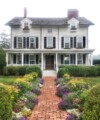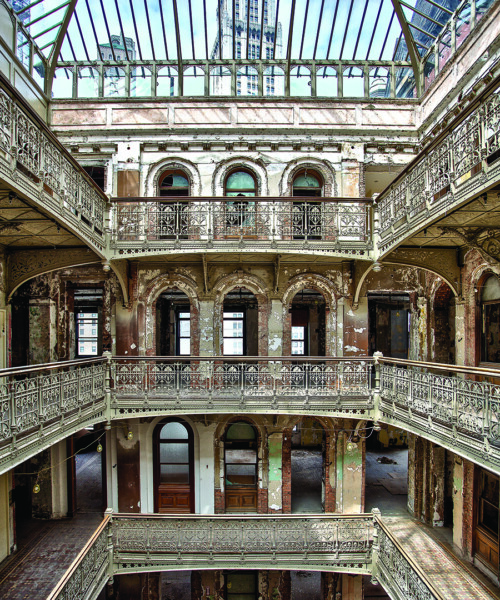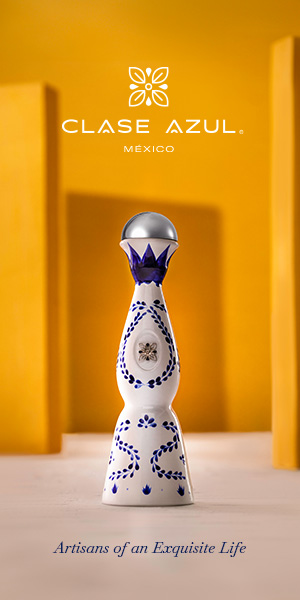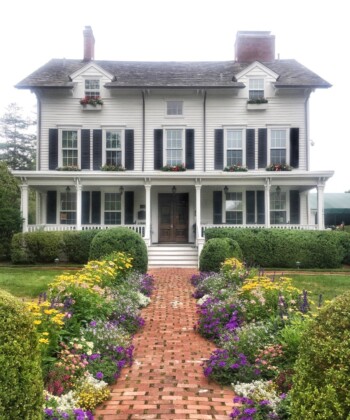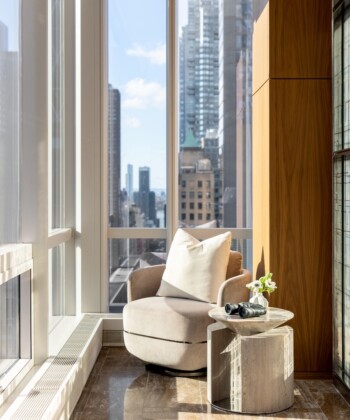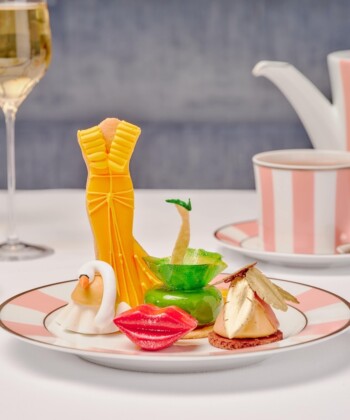Upon entering the dark and oaky lobby of The Beekman hotel, one immediately senses the richness of its history, like tracing the patina of an antique map. The landmarked Queen Anne–style building, designed by renowned architect James M. Farnsworth, first rose skyward 135 years ago as the Brooklyn Bridge was built a short walk away.
The most magical moment comes when stepping into the center of the atrium, a stunning nine-story head-tilter that leads its guests’ gazes up to an expansive skylight. Plentiful daylight suffuses the space with warmth and reveals the intricacy of the restored Victorian-era cast-iron railings. The Beekman hosts 287 rooms and suites, as well as penthouses nestled within handsome brick turrets. It’s hard to imagine that this place, imbued with such soulful luxury, was, until now, nearly hidden from time.
Much like being inside a museum, it’s impossible to ignore the hotel’s maturity and elegance when you’re surrounded by details so expertly restored to their original glory. The Beekman sits on a venerable site where, in 1830, Temple Court—the namesake of the hotel’s main restaurant by chef Tom Colicchio—was an extension of the New York Mercantile Library. Dubbed Clinton Hall, the space inside was the scene of frequent lectures by greats like Ralph Waldo Emerson and Oliver Wendell Holmes Sr., and where one might rub elbows with Edgar Allan Poe. The grounds were also the birthplace of New York University in 1832, and the venue for the 1871 New York debut of Shakespeare’s Hamlet. It’s a setting that inspired luminaries of the past, and a place you won’t soon forget. Dare we say The Beekman is our own charming hotel version of Café de Flore? If these walls could talk, they’d have plenty to say.







